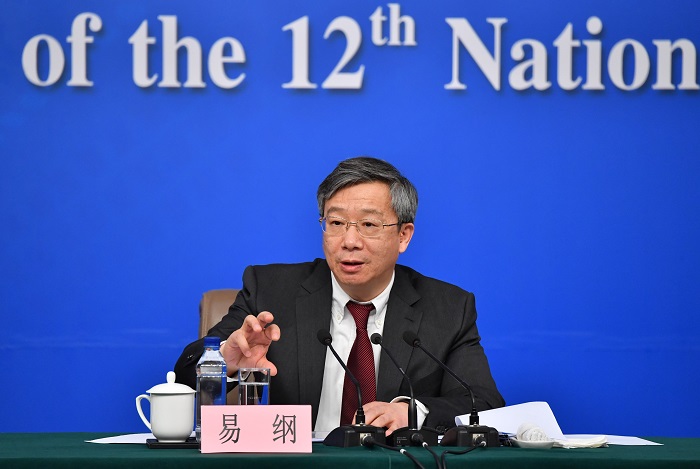Beijing, China’s top central banker on Sunday signalled that Beijing and Washington were getting close to reaching a currency deal as part of their continuing negotiations to settle a yearlong trade battle.
“Both sides have reached consensus on many crucial and important issues,” People’s Bank of China (PBOC) Governor Yi Gang told the media here on the sidelines of the nation’s annual legislative session.
As part of the accord, Yi said, China won’t engage in competitive devaluation to give Chinese exporters a leg up in foreign markets — a commitment Chinese officials have also made in multilateral agreements such as those among the Group of 20 (G20) industrial nations.
How China manages its currency has been a point of contention between Washington and Beijing for years.
US President Donald Trump was vocal throughout his election campaign in saying China manipulates the yuan to gain an advantage in trade by making its products relatively cheaper.
Trump repeated the charge last year, when the yuan’s plunge aroused suspicion that Beijing was pushing down its value to offset US tariffs on Chinese products.
In the recent trade talks, US negotiators pushed their Chinese counterparts to keep the yuan stable and to improve transparency in currency-market interventions by China’s central bank.
During a congressional hearing last month, US Trade Representative Robert Lighthizer said “we have spent a lot of time on currency and the agreement will be enforceable”.
Still, how the currency deal, if reached, will be enforced remains unclear. Both sides are haggling over an enforcement mechanism for the broader trade agreement.
Yi said both sides have discussed how they should disclose information when they buy or sell in foreign-exchange markets according to rules set by the International Monetary Fund.
Another point of discussion, he said, involves how both nations should respect the autonomy of each other’s monetary policy.
That latter issue is of deepening concern to the PBOC because it doesn’t want a pledge to keep the yuan steady to tie its hands in supporting economic growth by loosening credit policy. Letting more yuan funds flow into the economy could pressure the value of the yuan.
The PBOC mainly looks at domestic factors when setting monetary policy, Yi said. “The exchange rate isn’t a major factor in domestic monetary policy.”
Yi also sought to temper investors’ expectations for more aggressive monetary easing to prop up the slowing economy. A “neutral” monetary stance, he said, means that China will keep its overall leverage ratio stable.
In the past year, the central bank cut the amount of cash banks must keep in reserve five times, in a bid to unleash more funds for lenders to make loans. There is still room for such reserve-requirement reductions this year, Mr. Yi said, though the room has narrowed.
He also said the central bank will continue to foster competition among banks as a way to lower lending rates, but he gave no indication that any reduction in benchmark interest rates are in the cards.
At the end of last year, credit amounted to 249.4 per cent of China’s gross domestic product, he said, which was 1.5 percentage points lower than the level as of the end of 2017.










